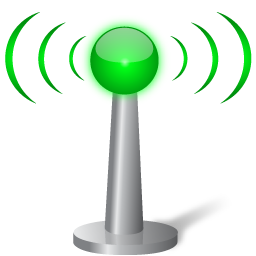Originally Published Jan 2005
By Jeff Bonsteel
The use of wireless networking, or Wireless Fidelity (Wi-Fi) networking is on the rise. It is often carelessly installed, leaving a lot of folks vulnerable to some nasty perils. Hazards include disclosure of your private information, Internet access slowdowns, aiding cyber criminals, lawsuits and maybe even prosecution.
Wi-Fi access is everywhere. It is so pervasive that in heavily populated regions there may be dozens, or even hundreds, of access points within a few blocks. An access point is the hardware used to accept network connections from PCs using wireless networking. Wi-Fi communication is done at radio frequencies.
Anyone with the right receiver can listen or worse.
Wi-Fi is wonderful technology. The most common usage is to share a high speed Internet (usually cable or DSL) connection among several PCs. A wireless access point/router is the perfect solution, if you want to avoid running
cable. Wi-Fi is inexpensive and usually very simple to install. You take it out of the box – plug it in as instructed – and it works- end of story. Well, not quite.
Unsecured Wi-Fi networks have achieved epidemic proportions. Out-of-box, there is NO SECURITY enabled at all for most consumer wireless access points. While driving around the local neighborhoods with a Wi-Fi finder one will see an average of 50% of the home wireless networks and about 20% of businesses are wide open to intrusion. (the percentages of unsecured networks has improved greatly in the 6 years since this was written, but any unsecured networks is too many.) A firewall provides a necessary level of security, but it is not nearly enough to protect your network from intrusions.
The most obvious risk is disclosure of confidential information. There are tools that can be downloaded from the Internet that will allow monitoring and logging of any Wi-Fi network traffic. With a laptop, a wireless card, a cheap antenna and software downloaded from the Internet; anyone with the time and motivation can pull any nearby Wi-Fi signals out of the air and capture them to their hard drive for analysis.
If you have unprotected (no passwords) file sharing enabled on your network, an intruder can easily get on your C: drive and access your documents, spreadsheets, tax records, Quicken files or anything else on a shared drive. If you use a server for confidential word documents or spread sheets, a van across the street with a Wi-Fi scanner could steal your personal information.
What can you do to protect yourself? Step one on the road to safeguarding your wireless connection is to set up WEP (Wired Equivalent Privacy) encryption. (minimum: WPA very strongly prefferred- added after original publication) This involves the use of up an electronic secret key. Connection to the wireless access point is then only possible if BOTH the access point and any PC using it are configured with the secret key.
If you aren't using any encryption for your wireless access point, then you are leaving your door wide open.
The question is, Should you lock your door? Law enforcement experts will tell you yes. Sure, it is true that if someone really, really wants in, they will find a way to get in. However, if your door is locked and your neighbor's is not, the bad guys will move next door for the easy pickings. The same advice applies to Wireless security. Dont leave your wireless door unlocked. Set up your wireless access point encryption! Anything less is not worth the risk.
This article was submitted by Jeff Bonsteel, owner of Bonsteel Computer Services. Jeff has over 20 years of experience as a developer of network and security software. Jeff now provides computer care & repair for PC owners throughout the Dayton area. He can be reached at 937-291-9751, Jeff@Bonsteel.net